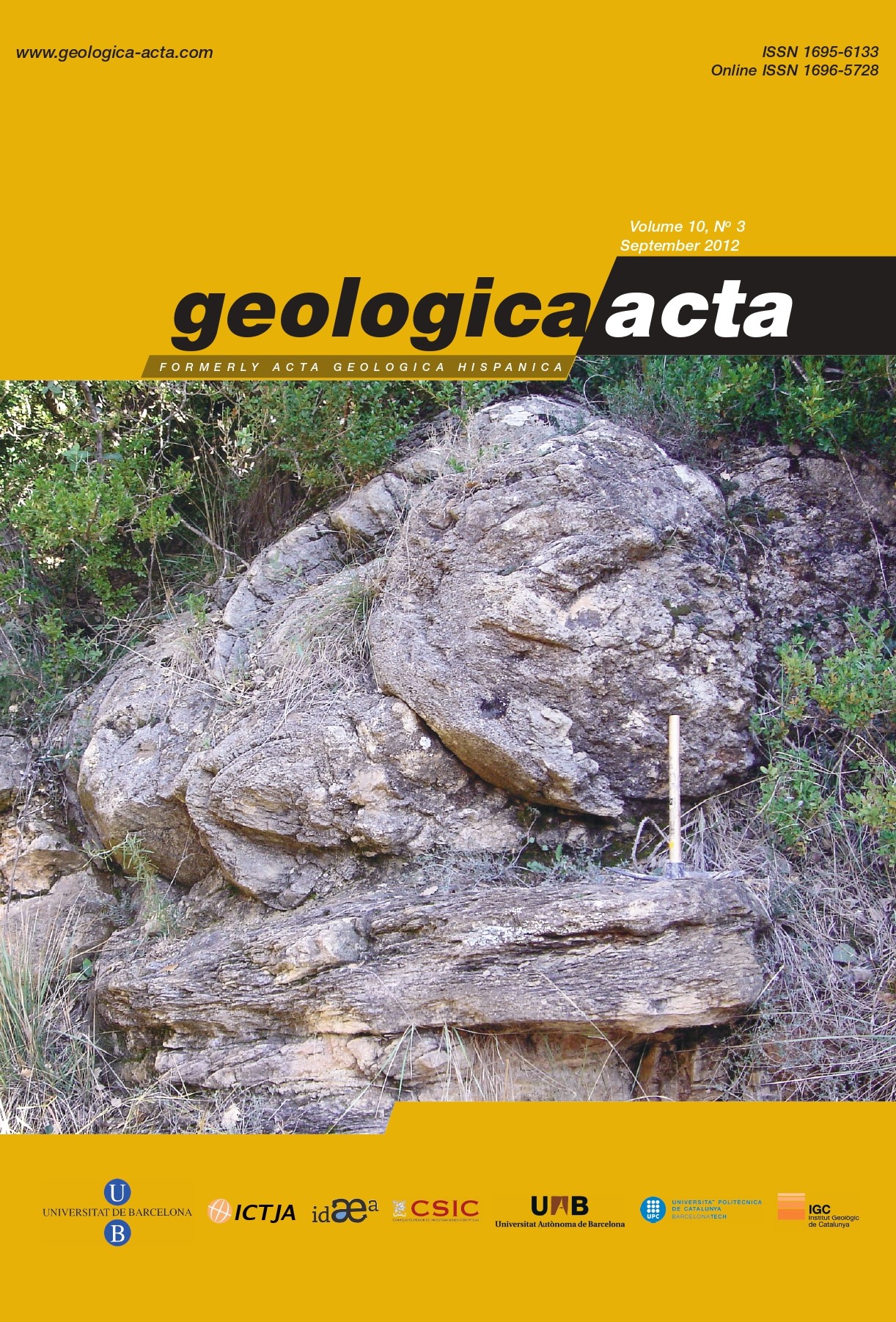Arc-parallel vs back-arc extension in the Western Gibraltar arc: Is the Gibraltar forearc still active?
DOI:
https://doi.org/10.1344/105.000001771Abstract
Extremely tight arcs, framed within the Eurasia-Africa convergence region, developed during the Neogene on
both sides of the western Mediterranean. A complex interplate deformation zone has been invoked to explain their structural trend-line patterns, the shortening directions and the development of back-arc basins. Updated structural and kinematic maps, combined with earthquake data covering the complete hinge zone of the western Gibraltar arc help us to explore the mode of strain partitioning from 25My ago to present. During the Miocene, the strain partitioning pattern showed arc-perpendicular shortening in the active orogenic wedge –assessed from the radial pattern of tectonic transport directions– accompained by subhorizontal stretching. Structures accommodating stretching fall into two categories on the basis of their space distribution and their relationships with the structural trend-line pattern: i) arc-parallel stretching structures in the external wedge (mainly normal faults and conjugate strike-slip faults); and ii) extensional faults developed in the hinterland zone in which transport directions are centripetal towards the Alborán back-arc basin. Pliocene to Recent deformational structures together with focal solutions from crustal earthquakes (n=167; 1.5<Mw<6.3) support that this strain partitioning pattern still occurs. By contrast, the eastern end zones of the western Gibraltar arc, especially during the last 5My, underwent intense transpression tectonics with a NW to NNW main shortening axis. These results agree with a still active Gibraltar forearc, governed by westward migrating subduction retreat or subcontinental mantle delamination.
Downloads
Published
Issue
Section
License

This work is licensed under a Creative Commons Attribution-ShareAlike 4.0 International License.
Copyright
Geologica Acta is the property of the UB, GEO3BCN, IDAEA and UAB. Geologica Acta must be cited for any partial or full reproduction. Papers are distributed under the Attribution-Share Alike Creative Commons License. This license allows anyone to reproduce and disseminate the content of the journal and even make derivative works crediting authorship and provenance and distributing possible derivative works under the same or an equivalent license.
Author Rights
Authors retain the copyright on their papers and are authorized to post them on their own web pages or institutional repositories. The copyright was retained by the journal from the year 2003 until 2009. In all cases, the complete citation and a link to the Digital Object Identifier (DOI) of the article must be included.
The authors can use excerpts or reproduce illustrations of their papers in other works without prior permission from Geologica Acta provided the source of the paper including the complete citation is fully acknowledged.




